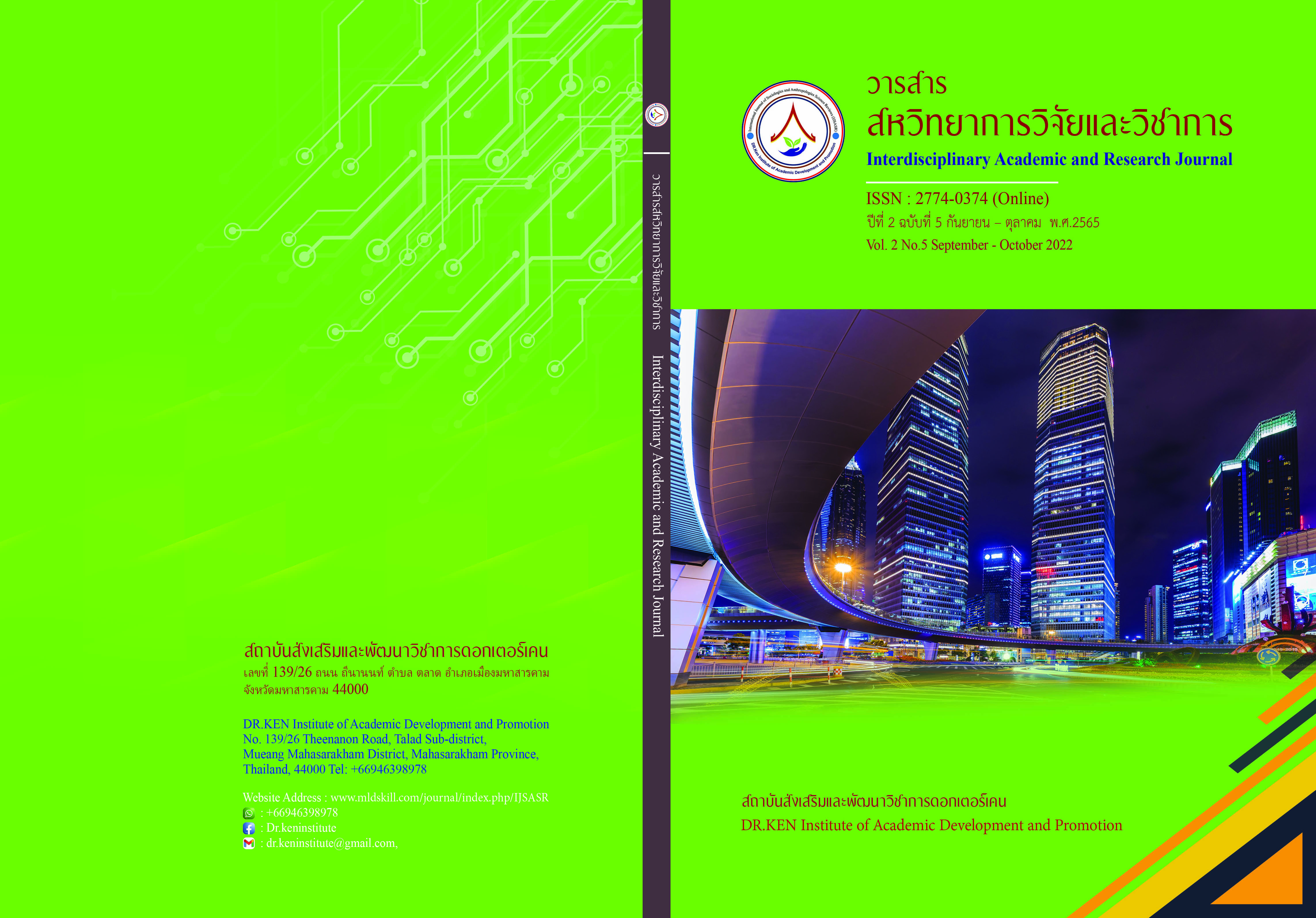The Development of An Economic Promotion Model for Organic Rice Community in Yasothorn Province
DOI:
https://doi.org/10.14456/iarj.2022.88Keywords:
Model Development; , Strengthening the Community Economy; , Organic RiceAbstract
Developing a country that emphasizes culture and wisdom is one of the strategies for solving poverty, unemployment and improving the quality of life of rural people to have a better living, and it has become a key policy of the government. The principle of development is to use the knowledge that the community has in the process to generate income in a process and link to building a strong community by using the concept of community economy. Thus, this research aims to: 1) investigate the situation surrounding the economic development of the organic rice community in Yasothon Province; 2) develop a strategy to improve the economy of the organic rice community in Yasothon Province; and 3) assess the approach to economic development of the organic rice community in Yasothon Province. According to the study's findings, 1) Yasothon Province has an important natural water source and a majority of its residents work in agriculture. Farmers with organic jasmine rice goods, processed rice, and other processed rice products are working in rice fields. The farmer's community is a boat farming community established by a community group with income who came to create a group in the hopes of making a profit or increasing income as well as to increase family income. By reducing the cost of life, but the community's economic system is not sustainable due to a lack of education, the destruction of property and equipment, as well as the current COVID-19 outbreak.
References
กรมส่งเสริมการเกษตร. (2560). ความสำคัญของการสร้างมูลค่าเพิ่มสินค้าเกษตร. กรุงเทพฯ: กองส่งเสริมวิสาหกิจชุมชน สหกรณ์การเกษตรแห่งประเทศไทย.
ชอบ เข็มกลัดและ โกวิทย์ พวงงาม. (2547). การวิจัยปฏิบัติการอย่างมีส่วนร่วมเชิงประยุกต์. กรุงเทพฯ : เสมาธรรม
ทวี วัชระเกียรติศักดิ์. (2559). การสร้างความเข้มแข็งทางเศรษฐกิจให้กับชุมชนโดยการพัฒนากลุ่มอาชีพ ในพื้นที่องค์การบริหารส่วนตำบลพลสงคราม อำเภอโนนสูง จังหวัดนครราชสีมา. วารสารวิชาการบริหารธุรกิจ. 5 (1), 43-54.
ธวัชชัย เพ็งพินิจ. (2555). การพัฒนาตัวชี้วัดการประยุกต์ใช้เศรษฐกิจพอเพียงของธุรกิจชุมชน :กรณีศึกษาหมู่บ้านโฮมสเตย์ จังหวัดหนองคาย. กรุงเทพฯ : มหาวิทยาลัยราชภัฏสวนดุสิต.
พิทยา ว่องกุล. (2541). ธุรกิจชุมชนกับการสร้างฐานเศรษฐกิจมั่นคง. กรุงเทพฯ : สำนักงานกองทุนสนับสนุนการวิจัย.
พีระชัย กุลชัย และปัญญา หมั่นเก็บ. (2547). การพัฒนากระบวนการเรียนรู้เกษตรกรรมยั่งยืนของเกษตรกรรายย่อย ภูมินิเวศน์ฉะเชิงเทรา. ในรายงานการสัมมนาระบบเกษตรแห่งชาติ ครั้งที่ 3 :สู่ระบบการผลิตอาหารที่ปลอดภัย สร้างมูลค่าเพิ่ม และใช้ทรัพยากรอย่างยั่งยืน. ระหว่างวันที่ 9-11 พฤศจิกายน 2547 ณ โรงแรมปางสวนแก้ว จ.เชียงใหม่.
ศุภภะ พัชราวลัย. (2561). เครือข่ายการพัฒนาความเป็นเมืองของชุมชนต้นแบบในองค์กรชุมชนตำบลไร่ขิง อำเภอสามพราน จังหวัดนครปฐม. วารสารนวัตกรรมการศึกษาและการวิจัย. 2 (2), 69-80.
สนิท ผัดเวียง. (2546). ปัญหาและอุปสรรคในการส่งเสริมเศรษฐกิจชุมชนแบบพึ่งตนเองขององค์การบริหารส่วนตำบล เขตอำเภอฝาง จังหวัดเชียงใหม่. เชียงใหม่ : มหาวิทยาลัยเชียงใหม่.
สำนักงานคณะกรรมการพัฒนาการเศรษฐกิจและสังคมแห่งชาติ. (2560). แผนพัฒนาเศรษฐกิจและสังคมแห่งชาติ. สำนักงานคณะกรรมการพัฒนาการเศรษฐกิจและสังคมแห่งชาติ. กรุงเทพฯ.
สำนักงานจังหวัดยโสธร. (2562). แผนพัฒนาจังหวัดยโสธร พ.ศ.2561-2565 (ฉบับทบทวนประจำปีงบประมาณ พ.ศ.2563). กลุ่มงานยุทธศาสตร์และข้อมูลเพื่อการพัฒนาจังหวัด สำนักงานจังหวัด.
อุทัยวรรณ ภู่เทศ. (2559). การพัฒนาศักยภาพของชุมชนในด้านการสร้างสรรค์ผลิตภัณฑ์จากตาลโตนด บนพื้นฐานภูมิปัญญาท้องถิ่น. วารสาร มจร สังคมศาสตร์ปริทรรศน์. 5 (2), 193-204.
Keeves, P.J. (1988). Educational research, methodology and measurement : An international handbook. Oxford : Pergamon Press.
Kemmis, & McTaggart, R. (1988). The Action research planner. 3rd edition. Geelong: Deakin University, Australia.
Downloads
Published
How to Cite
Issue
Section
License
Copyright (c) 2022 Suwan Thiabsi, Pongtorn Popoonsak, Nattachai Jantachum

This work is licensed under a Creative Commons Attribution-NonCommercial-NoDerivatives 4.0 International License.
Copyright on any article in the Interdisciplinary Academic and Research Journal is retained by the author(s) under the under the Creative Commons Attribution-NonCommercial-NoDerivatives 4.0 International License. Permission to use text, content, images, etc. of publication. Any user to read, download, copy, distribute, print, search, or link to the full texts of articles, crawl them for indexing, pass them as data to software, or use them for any other lawful purpose. But do not use it for commercial use or with the intent to benefit any business.
















.png)


